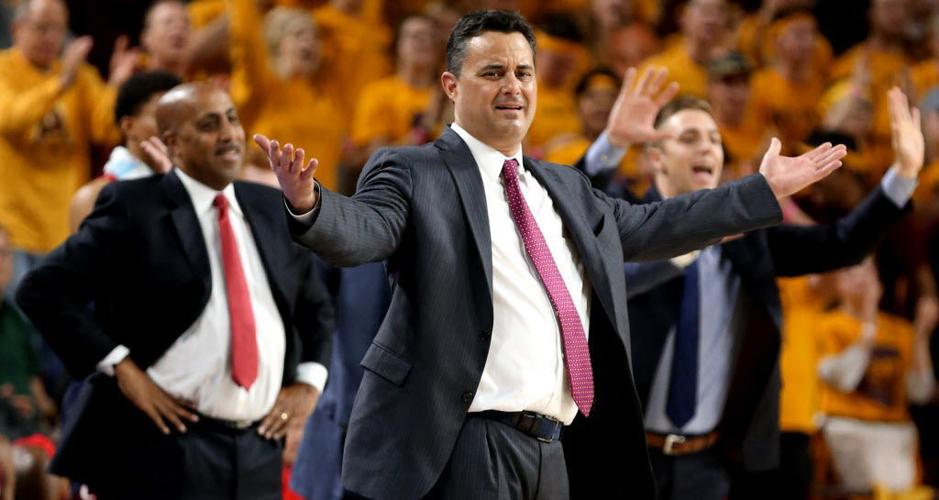CORVALLIS, Oregon —
Every Tuesday afternoon during the 1981 basketball season, I drove to Gill Coliseum to interview Oregon State coach Ralph Miller. The routine never changed.
Miller stood on the midcourt Beaver logo smoking a skinny brown cigarette. He would never address me by name, never shake hands at the conclusion of the interview, and after taking the last drag of his cigarette, he would drop it onto the Beaver and crush it with his foot.
“That’s enough of this foolishness,” he would say and walk off.
That’s the way Miller was with almost everybody. He was older than Old School.
Looking back, it’s insane to think that the coach of the leading basketball program on the West Coast was so accessible. The few beat writers who covered the Beavers flew on the same plane, stayed in the same hotel, and often rode in OSU’s team bus.
It didn’t make the magnitude of what Ralph Miller and the Beavers accomplished any less grand.
Week after week, the ’81 Beavers climbed the AP Poll, from No. 7 to No. 3 and finally to No. 1. It wasn’t long before Oregon State was 26-0.
As good as the Beavers were — a year earlier they had been ranked as high as No. 2 and finished 26-4 — Miller routinely made himself available to a local reporter or two after practice. Often it was just the coach and I standing in a haze of cigarette smoke.
For five years, Gill Coliseum was the loudest basketball arena in the league and maybe the most exciting place in college basketball. The Beavers led the Pac-10 in attendance from 1981-84, generating a now-unthinkable streak of 74 consecutive sellouts.
What I didn’t understand in 1981 was the fleeting nature of college basketball. Miller turned 62 that season and his rise to the top of the Pac-10 was near an end. He would coach until 1989, but by then, Lute Olson had taken control of the league. Now, those who follow Arizona basketball sometimes think it’s fiction when you tell them the Beavers, not the Wildcats, used to reign.
Oregon State went 1-17 in the Pac-12 a year ago. It seems like the Beavers always go 1-17.
On the final weekend of the 1981-82 season, the last week once-trendy and popular Fred Snowden coached the Wildcats, I phoned Miller from my new office in Tucson and asked what he thought of the 3-13 Wildcats, who were a game out of last place.
“Well, someone has to finish last,” he said in his typical, cut-out-the-foolishness dialogue.
A few days later, Oregon State stomped Arizona 92-64 at McKale Center, then the UA’s most lopsided home loss in the arena’s nine-year history. The crowd was generously listed at 7,430.
Arizona longed to play basketball the way the Beavers did. Miller’s brand was feared: The Beavers were the best-passing team in college basketball, and their pressure defense was suffocating.
Miller didn’t care if a reporter or fans watched practice, or if some guy from a Portland TV station took footage of a workout. He was going to play the same way. They were “Guard U” long before Arizona State ever thought of it.
What few saw coming was that Miller was not a dogged recruiter, nothing close to what Olson brought to Arizona. As college basketball gained a new and national visibility via ESPN, and as Miller neared his retirement in 1989 — when Gary Payton neared the end of his eligibility — the Beavers’ talent and fan-base began a long erosion.
Arizona went on a 26-1 streak against OSU.
In 1983, the Beavers drew a record 147,448 fans to Gill Coliseum. By 1993, the school drew a record-low 59,028.
Miller’s “someone has to finish last” declaration turned on his school. The glory days were gone in what seemed to be a flash.
My point is, given the fragile nature of the game, given the FBI investigation and potential NCAA sanctions against Arizona, it’s not crazy to think Arizona could be on the brink of an Oregon State-like fade.
Recruiting progress has stalled. Sean Miller’s future is uncertain. Oregon, UCLA, Arizona State and Washington appear destined for some level of national prominence. Arizona? The jury is literally out.
On the day Ralph Miller coached his last game in Tucson, Jan. 12, 1989, a sellout crowd gave him a standing ovation. Olson presented Miller with a painting of the Grand Canyon. It was titled: “Time and the river flowing.”
To keep its river flowing, Arizona must win at Gill Coliseum on Thursday night. But no one knows if the Wildcats, like the Beavers of the 1980s, are about to run out of time.





